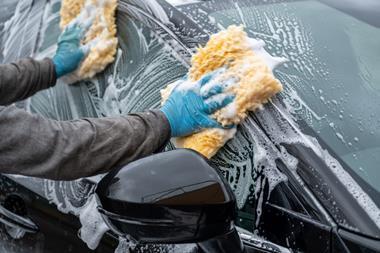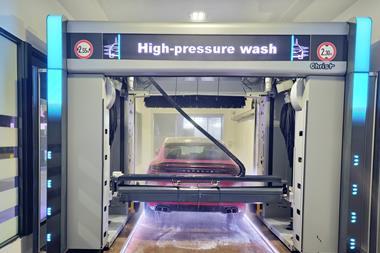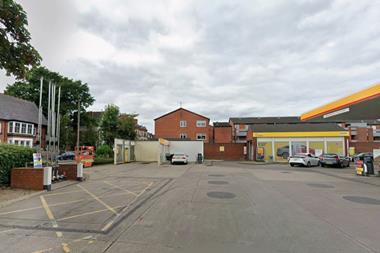
Although many of us have recently experienced occasionally biblical downpours, the situation only a few months ago was very different indeed.

The Met Office announced on August 12, that the period between January and June 2022 had been the driest in England since 1976 and this hot weather continued almost uninterrupted well into August, while also setting record-breaking temperatures.
Somewhat counterintuitively, droughts are a relatively common feature of the weather in the United Kingdom, with one around every 5-10 years on average. These droughts usually occur during the summer, when a blocking high-pressure system causes hot, dry weather for an extended period. A drought is usually defined as “an extended period of weather (usually around three weeks) when less than a third of the usual precipitation falls. Compared to other countries, the UK definition of a drought is much less severe. In Libya in the Sahel region for example, a drought is usually only recognised after two years without any measurable rainfall.
As of March 2019, according to the Environment Agency, owing to the impact of climate change, England’s anticipated demand for water will exceed its supply around the year 2045. Leaks in our water supply lose approximately 20% of the daily water supply and greater investment in plugging leaks is urgently needed.
The Environment Agency’s responses to drought management in England consist of four stages that apply to both businesses and homes.
The first stage is a media campaign, urging people to save water and thus avoid the need to take specific measures.
If the drought goes on, and water levels continue to decrease, further measures include a hosepipe ban, which forbids the use of hosepipes. This generally applies to car washing at home using a hose, pressure washers and other similar devices in a future drought. These measures were brought in, particularly the ban on hosepipes, in 1976 and 2006.
The third stage involves conserving any non-essential supplies of water. These measures are brought in when no precipitation is forecast and water supplies are already very low. The options include:
- · widening the hosepipe bans, to include sprinklers
- · drastic measures such as banning cleaning of buildings, vehicles and windows or the filling of swimming pools.
These measures were also brought in during the 1976 drought.
The fourth and final stage involves drastic measures of water rationing to all businesses and homes in the UK in an emergency drought order. The measures are brought in only in exceptional conditions of extended periods with little or no rainfall. This means no water supplies at certain times of the day or allowing water for a specific amount of time. Standpipes and water tankers can be used as a last resort to have only set amounts of water given to each household in a neighbourhood. These measures were last used during the 1976 drought and were accompanied by a ban on commercial car washing.
Over the past few years, the Car Wash Association (CWA), has been an active campaigner across different climate competences, working for example to ensure that trade effluent from car washes is disposed of correctly into foul drains and promoting safe practices during the pandemic. Our efforts in this sector have resulted in a helpful working relationship with a wide range of Government agencies and industry stakeholders.
The threat of developing water shortages this year prompted us to formulate a code of conduct for car wash operators that has been informed by extensive research and input from our membership that is acutely conscious of the need to adapt business practices to reflect the changing climate. While the code is voluntary, CWA members are generally quick to heed this common-sense advice. In this instance we wrote to all the water companies at the very beginning of August as well as to the Environment Agency and DEFRA to inform them of the car wash sector’s self-imposed code of practice following a drought alert and possible hosepipe ban that consists of a traffic light system where:
- green indicates that no measures need yet to be taken;
- amber means that operations can continue subject to implementation of water saving measures;
- red means operations must cease.
This system is coordinated on a regional basis, reflecting the reality that not all areas of the country are necessarily similarly affected by drought restrictions.
The methods that CWA members are encouraged to introduce under the current ‘amber’ scenario for reduced (and sustainable) water usage include the following:
- Fixing any leaks (taps, pressure washers, hoses etc)
- Reduced pre-washing by pressure washer
- Adoption of a ‘low flow’ rates for jet washers
- Modifying processes for site cleaning
These combined measures can result in water savings of up to 20-25% on a hand car wash, equivalent to a reduction of 40-70 litres per car washed.
In addition, CWA members are also advised to adopt further measures including:
- Installation of water recycling equipment where possible - up to 85% water savings
- Waterless car wash service using hand application of specialised chemicals
- Installation of private water boreholes independent from the grid
- Importation of water by tanker from regions not affected by drought
By implementing a combination of these measures, CWA members can drastically reduce their water consumption and consequently the demand on water companies. These techniques go beyond exceeding environmental expectations. By allowing compliant car washes to continue their operations, they can provide an economical and environmentally friendly alternative for motorists who might otherwise resort to using a hosepipe.
The CWA also requested that those members who effectively reduce their water consumption by up to 20% or are able to access water from sources independent from the grid, be exempt from any further and more radical water usage restrictions that might follow the current hosepipe bans. Including them in any such additional cutbacks and restrictions would render their substantial investments into water-saving measures pointless and discourage any further such investments by the industry in the future. In previous droughts, commercial car washes that have implemented such water-saving measures have been authorised to continue to operate - despite more radical restrictions being imposed - well after sites that had failed to implement similar measures had been shut down.
In addition, we also suggested that retailers that operate such water saving measures are authorised to notify the public with appropriate signage indicating their compliance with local environmental and water-saving regulations. This helps to inform consumers that by using a professional car wash they would be cleaning their cars in a responsible and environmentally sensitive manner.

































No comments yet